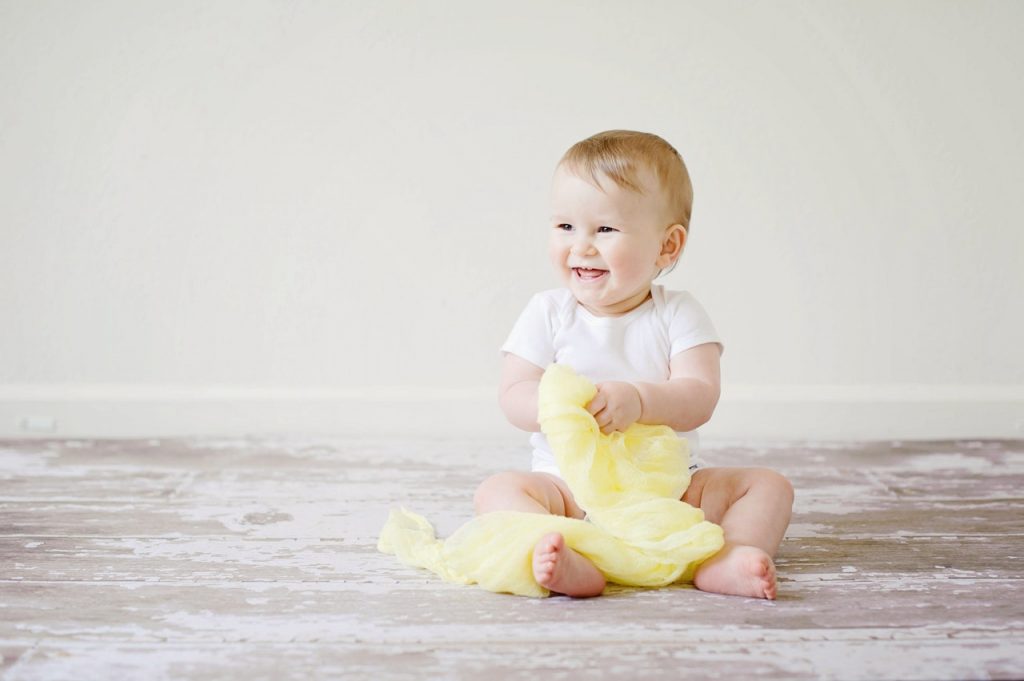If you’re a parent or a grandparent, chances are you’re concerned about the safety of your loved ones, especially your children.
As a child gets older, they spend less and less time with you or other trusted adults and more time away with their friends. Now, they aren’t always in your sights and you cant protect them all the time, especially not when they’re far away from you.
One of the best ways to keep your child safe and prepared for any situation is to teach them about everyday carry (EDC) concept. This gives them the necessary knowledge and skills to tackle most situations that they will face in their lives.
By teaching them from a young age, you’re preparing their mindset and instincts so that they’ll become more prepared for anything. With this in mind, your child can now react appropriately when shit hits the fan.
Knowing this, you won’t have to worry about your child all the time. You know that they can take care of themselves pretty well.
EDC Kit for Kids
Having the appropriate tools are one of the core tenets of being prepared. Besides knowledge, you need to equip your kid with the tools to capitalize on that knowledge. This is where an EDC kit comes in handy, it enables your kid to react appropriately to any situation.
So, you know you want your child to have an EDC kit, but they can’t possibly carry everything you do. So how do you decide what items belong in an EDC kit that’s for kids? The first thing to do is to evaluate your child based on their age and other factors such as
- Developmental level
- Maturity
- Previous Experience
- Amount of Time Spent Away from Home or Parents
Different developmental level and maturity leads to different gear needs. More mature kids can be entrusted to carry way more gear compared to toddlers and small children. Experience also plays a big part in selecting and building an EDC kit for your children. More experienced children can handle more sophisticated tools that can do a lot more.
However, one of the most important things to consider is the amount of time the child will spend away from you or from home. The longer the child needs to be from home, the more diverse their EDC kit should be because they need to be self sufficient.
Infants (Newborn – 18 months old)
Infants or kids under 18 months of age should be under the direct supervision of you or another trusted adult 24/7. That means, they won’t be able to carry their EDC kit themselves and you need to carry their EDC items with you.
Because of their age and relative inexperience, it’s not wise to give them any EDC tool. They might hurt themselves when trying to use it. However, depending on their age, you could give them toys that resemble EDC items. This is done to familiarize them with the concept of EDC.
Any EDC item you give them should be infant safe and not a choking hazard. These tools will really be more just to get them used to the concept, not for actual EDC use.
Toddlers (18 months – 3 years old)

At this age range, it’s still not the toddler’s job to carry their own EDC gear because they should still be under your supervision. Their relative inexperience and young age makes it hard for them to grasp the concept of EDC and its uses.
However, it’s still very important for you to teach the concept of EDC and how to be prepared for all situations to your toddler. It becomes even more important because this is a habit forming age that is critical to their future behavior.
Toddlers love to mimic adults, especially one they can trust. Because of that, when you want them to learn about EDC, the first step should be to show that you yourself use EDC tools. If started early, this can become a habit and maybe safe their life in the future.
For starters, you can give your toddler safe EDC items to carry such as a small bandana or a small clip-on flashlight. However, keep in mind that your toddler might try to swallow them so be careful. Small batteries can also do serious damage if swallowed by your child. Because of that, make sure that you toddler can’t swallow the flashlight or the batteries.
Again, in this age range the idea is not for them to keep themselves safe with their EDC, that’s your job as the adult. But you can begin to instill in them the habit of carrying certain items daily.
You can emphasize the importance of certain clothing items which keep them warm and dry such as socks, shoes, jacket, hat, gloves, and a raincoat. Talk to them about the items you carry every day such as your keys, and purse to familiarize your kid with those items. You can even let them get used to carrying everyday items such as a phone, keys, and wallet.
However, keep in mind that they still might swallow these tools. Because of that, you should always supervise your toddler or use safe items that aren’t a choking hazard.
This age is a also a good time to teach them simple safety rules and habits that will stick with them and serve them as they grow older. Simple safety rules such as “Don’t go with strangers” or “Look both ways for cars before crossing the street” can be ingrained with your guidance.
This is also the perfect age to teach them the art of observation and and how to analyze their surroundings. You can start by pointing out when things are out of place in their room or when you notice a change in the weather.
Saying something as simple as “are there any toys in your room that need put away?” can help them notice things that not where they should be. You can also point out a change in surrounding situations such as “It’s starting to rain, we need to get our raincoats” can help kids learn to be more alert and react to situations.
Pre-School Age (3 – 5 years old)

Pre-school kids aged 3 until 5 are naturally very curious about their surroundings. They like to observe and mimic what others around them are doing. Kids these age learn about our world and how to function in it by watching and mimicking others, especially you, their parent.
Because of that, if you want your pre-school aged kid to learn about the concept of EDC and the tools related to EDC, you should show them. Everything you do will be mimicked by your children, because of that, try to incorporate your EDC gear and routine and show them to your kid.
You should teach them the importance of EDC concept and carrying EDC items by explaining to them every time you use one of your EDC gear to solve something. When your child sees that you regularly use those items and it helps to solve daily situations, they’ll naturally want to mimic that.
Pre school aged kids should still be under direct adult supervision most of the time. However, you can start to entrust them with safer and more utilitarian EDC gear as they play toy. This can help familiarize them with tools that in the future, they’ll likely incorporate into their EDC gear.
Their EDC kit can consist of tools they can use to explore their world and be comfortable as well as a few things they can use to care for minor scrapes and scratches.
The following are some good items to consider for preschoolers:
- plastic magnifying glass
- a keyring or lanyard with a whistle on it
- a bandana
- a plastic compass
- flashlight or Kids Headlamp (make sure batteries are inaccessible)
- paracord bracelet
- ziplock bag of trail mix or granola
- Band-Aids
- Wallet or change purse with a dollar and maybe quarters (if mature enough not to swallow change)
- Theo Klein Toy Swiss Army Knife
- Comb or brush
- Chapstick (to prevent chapped lips)
- Hat, mittens, and scarf in cold weather
When choosing the best tools to give your pre school aged kid as their EDC kit, you need to consider where they can store them and also it’s weight. As we always say, don’t overpack because it’ll simply weigh them down and hinder their movement.
If your kid thinks that bringing EDC gear is too much of a hassle, they’ll stop wanting to do it and that’s not in anyone’s best interest. Because of that, you should ease your kid into using and carrying these EDC tools one tool at a time until they realize for themselves the importance of EDC.
Elementary School Age (6 – 8 years old)

Elementary school aged children are getting more and more independent from their parents. These are the kids who may be away from their parents for several hours during the day. They may ride a bus to school every day, or they may be playing outside without direct supervision. These kids may also start having slumber parties with their close friends during the weekends.
Kids this age can handle a little more responsibility and can have incidents where they get into a sticky situation and you’re not there to help them. Because of that, you need to start drilling them about the concept of EDC, especially if you haven’t taught them that since an early age.
Because they’re relatively mature and experienced, you can entrust them with real tools for real situations. For these kids, you can start teaching and familiarizing them with basic EDC tools such as the ones listed below
- Keychain with mini flashlight (to signal for help)
- Bandana
- Survival Whistle
- Drinking Straw
- Paracord Bracelet with Survival Gear
- Hand Sanitizer
- Wristwatch or pocket watch
- Handheld Walkie Talkie (when playing in the backyard or neighborhood)
- Waterproof ID Bracelet or tag in their clothing
- Card or piece of paper with contact info for an emergency contact person
- Wallet (with $5 emergency money and some change)
- Button compass
- Magnifying glass
- Lanyard with a house key
- Chapstick
- Baby Wipes or Alcohol wipes
- JJs Original Knife Kit (wooden) or the Spyderco Ladybug Knife (with strict adult supervision)
- Kids Balaclava, gloves, and other cold weather gear
- Mosquito Repellant Wrist Band
Because these kids usually have an experience or two with sticky situations, they’ll appreciate the utility of an EDC kit more. They’ll also quickly learn the value of these tools if they suddenly find that they’re in a sticky situation themselves.
However, because they’re still at a young age, it’s better if you ease them into the concept of EDC without forcing them. When forced, kids tend to resent or even reject what you teach, this is not good, especially if what your teaching might save their lives.
When packing their EDC gear, try to involve them so that they can start to analyze their needs and circumstances. You should also teach them the concept of not overpacking, keeping the pack light, and using multipurpose tools.
Middle School Age (10 – 14 years old)

Middle school aged kids are even more independent compared to elementary school kids. At this age, they are spending more time away from home and without the direct supervision of their parents. They often hang out with friends in the neighborhood or even the woods rather than just in the backyard.
This is about the time that most kids begin to have the courage and ability to do what they always wanted to do as a kid, explore! Because of that, it’s very important that your middle school aged kid knows the concept of EDC.
When they’re out exploring and doing things, it’s inevitable that they’ll come across a sticky situation. Their EDC knowledge and tools will help them handle these kinds of situation well. It might even save their lives a couple of times, depending on what kind of adventure they’re going through.
Because kids this age are considered quite mature and responsible, you can entrust them with better and more practical EDC gear. They should also have plenty of experience from their elementary school years so that they can handle more sophisticated tools.
For middle school aged kids, here are several EDC tools you can give and teach them to use
- Wallet or purse with emergency cash
- Written Emergency contact information
- Fisher Space Pen (for writing in all conditions)
- Rite in the Rain notebook (or other waterproof writing pad)
- Refillable water bottle
- Keychain with house key
- Brush or comb and hair tie (for those with long hair)
- Chapstick
- Orienteering compass
- Paper clips wrapped with duct tape
- Small flashlight (perhaps on keychain)
- Multi-tool such as the Leatherman Micra Multi-Tool
- Pocket knife (when not in school and with strict adult supervision)
- Band-Aids and Neosporin (for first aid treatment of open wounds)
- Bandana
- Cell phone with protective casing (debatable if they need cell phones or smart phones at this age)
- Inhaler (if applicable)
- Alcohol Wipes
- Whistle with Lanyard
- Bobby Pins
- Feminine hygiene items (if applicable)
- Mini Portable GPS Tracker (in case your kids gets lost or are kidnapped, you can actively track them with this)
By now, they should already be familiar with what kind of sticky situation they might get into during their adventures. Because of that, they’ll appreciate the EDC kit a lot more compared to elementary school aged kids.
Middle school kids will be able to utilize these tools better because of their maturity and experience. Their strength will also help them carry a lot more EDC gear compared to younger kids. However, you should still teach them the importance of packing light and bringing only things that you need.
During middle school, you should also teach your kids the basic skills for survival. These skills will complement their EDC kit and will allow them to fully utilize their EDC tool to get out of harms way.
High School Age (15-18 years)

High school aged kids are very independent, rebellious, and anxious to learn about new things. Kids this age will often push the boundaries of their new-found independence. They spend a good deal of time away from home either at school or work.
These kids also spend increasing amounts of time away from parents, either home alone or in the company of their peers. Whether we as parents realize it or not, these kids are now transitioning to be full fledged adults. They’re slowly learning what it means to be an adult and what kind of responsibility it entails.
This means they may sometimes be faced with a lot of dangers and us parents are just not around to protect them. It’s a crucial time for kids to be prepared to protect themselves, not just from minor scrapes and bruises but real dangers like assault, rape, car accidents, and accidental trauma.
They need to learn how to handle these kind of situations themselves. Because you’re not there to protect them, they’ll also learn about the dangers and consequences of not being prepared.
Every child from a young age should be taught the basics of personal safety around things such as water, power lines, guns, drugs and alcohol, strangers, and traffic. These knowledge and skill will be invaluable during their high school and college years ahead.
Because of this, having a full fledged EDC kit is very important for high school kids. They should try to put together their own kit, with your supervision of course. This will be the first test of their ability to analyze their needs and what situations will likely occur in their daily lives.
The list below can be used as a pointer on what to pack on a multipurpose EDC kit for high school students. However, keep in mind that this is only a general list, it tries to cover the a lot of needs and situations. If your kid feels like they don’t need it and it is well founded, simply don’t bring it.
- Wallet or purse with identification, emergency cash, and some change
- Whistle
- Flashlight
- Space pen or Tactical Pen
- Paracord bracelet
- Wrist or pocket watch
- Cell phone with protective casing
- Compass
- CPR Mask and latex gloves (if CPR Trained)
- Keyring or Carabiner with Keys
- USB stick
- Chapstick and other forms of moisturizer
- Paperclip wrapped in scotch tape or electrical tape
- Tissues
- Individual First Aid Kit
- Bobby Pins or hair tie
- Inhaler if applicable
- Feminine Hygiene items if applicable
- Sharpie marker or other multipurpose writing tool
- Leatherman Freestyle Multi-Tool (or other multi tools with multiple functions)
- Portable charger/power bank
- Pocket knife (with adult supervision)
- Pepper spray or mace (legally allowed in 33 states without restrictions but check your state laws carefully)
The list above covers a lot of tools and gears that your kid may or might not need. It’s your kid’s job to analyze what they should or should not bring in an EDC kit. At this age, your kid should be able to analyze it well already if you’ve taught them well about the concept of EDC and being prepared at all times.
If your kid has intimate knowledge about EDC, prepping, and survival, you won’t have to worry about them being in harms way for too long. Complete that with a well prepared EDC kit and your kid’s chances of navigating sticky situations increases dramatically. It might even save them from potentially lethal situations such as a school shooting, school bus accident, or a fire at their school.
Other EDC Tools for Kids
Besides the relatively extensive list above, there are several tools, EDC gear, and advice that’s appropriate for kids of all ages. These include items that protect the body of your kid from external threats be it the weather, the landscape, or even hostile assailants.
Firstly, you need to make sure that their extremities are well-protected. This is relevant in all conditions, even more so if you live in colder climates or rugged landscapes.
Kids ten and older may resist wearing sturdy shoes or protective gear to school if they aren’t “stylish.” You can get around this by having a rule that they must take the sturdy shoes, warm jacket, hat, and gloves in their backpack just in case they need them. However feel free to modify this rule depending on what works in your family.
In general, your child should be wearing or have immediate access to a good sturdy foot protection. Consider high-quality hiking boots, shoes, or hiking sandals from Vasque or or any other trusted manufacturer.
Merino wool socks are a great way to keep feet warm and dry during wet or cold weather. Merino wool holds its insulative properties when wet and dries relatively quickly.
Thinsulate brand mittens or gloves are best for keeping your kids hands warm, dry, and comfortable in cold weather. In extreme temperatures you can even add a Hothands hand warmers to the EDC list so they can place them in their pockets for extra warmth.
The last thing for any child’s EDC kit which applies in my opinion for all school age children who regularly carry a backpack to/from school is a bulletproof insert in their backpack or messenger bag. It’s sad that now this is something that even must be considered but from a safety standpoint, it’s really important due to the frequency of armed crime.
As a parent, you can determine at what age you explain that the insert is there and train them to turn their back or how to position their messenger bag for best protection in the event of a school shooting. This can be learned more in gun safety classes with a certified instructor.
Where to Put All these EDC Gear?

If they only use their backpacks, it might not efficient or accessible during critical situations. We’ve compiled the top 9 places where you can store and even wear your EDC gear for maximum accessibility. Go have a read with your kid to find out where they should pack all of the gear.
In general, you need to have an organized pack so that your kid can access their EDC gear quickly and efficiently during sticky situations.
Maxpedition Micro Pocket Organizer is a great place to store those items that kids want to carry but can’t take to school. They can keep everything together until after school and weekends when they can carry it in their pockets or vest.
For toddlers and preschool age kids, look at something like Mini Backpack for those times when they don’t have pockets. Older tweens and high school kids may prefer to carry EDC items in a wallet, purse or even a small messenger bag. For older girls, we’ve compiled an EDC gear list that you can store inside your purse, have a look!
You can even invest in an EDC waist bag if you feel that your children need more storage space and better accessibility for their EDC gear.
When your kid has their own vehicle, you can then teach them about the importance of carrying EDC gear there. Besides drastically increasing how much gear they can carry, bringing EDC gear on their car can help distribute the weight of the kit. If you’re interested in what to pack inside your vehicle, check out our guide on vehicle everyday carry items.
Involving your Kid in Packing their EDC Gear
As we’ve said countless times before, it’s best if you can include your child in the process of creating their EDC kit. Get their input and feedback on what items they feel are needed and which aren’t. Use your judgment and knowledge to help them construct their own personalized EDC kit.
Take advantage of the time you spend with them to explain why you feel specific items are mandatory and why others are optional. Aside from family quality time, your kid will appreciate every item more due to them knowing why it needs to be there.
Most importantly, make sure you provide plenty of opportunities for them to practice using and accessing their EDC gear. They should be familiar using each item enough to feel comfortable using it during a crisis situation.
Response time is critical to survival in an emergency. The more instinctively your child responds, the better their chances of survival. This is also why they need to pack with accessibility in mind. Even if their response time is fast, if the gear can’t be found or is hard to reach, they cant use it.
All in all, an EDC kit that your kid crafts themselves will be better compared to anything you as a parent can come up with. It’s not because they have more knowledge, but the simple fact that they know what every item does and where it’s placed. They’ll also have a better sense of belonging for their EDC gear so they’ll care for it well.


